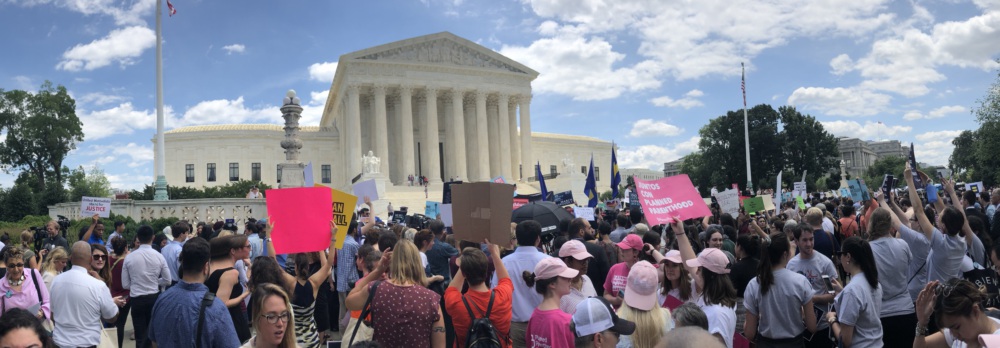Reflections on a President, a Ban, and a Country’s Racial Past
June 30, 2018

June 30, 2018
By Laylaa Abdul-Khabir
I remember the day then-candidate Donald Trump first announced his proposal for a Muslim ban. Reading from a notecard on the podium, he stated, carefully and deliberately, “Donald J. Trump is calling for a complete and total shutdown of Muslims entering the United States … ” he continued, “ … until our country’s representatives can figure out what the hell is going on!” The crowd cheered.
It seemed like a stunt, another one of a series of theatrics designed to draw attention to his candidacy. This week, the highest court in the land validated the president’s proposal and vouched for his authority to issue what they have called “entry restrictions.” The Supreme Court in Trump v. Hawaii granted legal legitimacy and cover for an executive order that will have ominous impacts on Muslims and adjacent communities at home and abroad.
The first Muslims came to America on slave ships, forced journeys across the Atlantic that were not the product of choice.
Origin stories are important, and words matter. The conflation of Muslims with a sense of suspicion and chaos in our country – “what the hell is going on” – was no accident. Much as Trump’s critics point to his lack of eloquent articulation, his words are carefully chosen, and often calculated to powerful effect. He did not need to state that Muslims are feared for their ties to terrorism both here and abroad, that as a group they are suspected; those sentiments were implied and deeply interwoven in our country’s racial imagination. “We have no choice,” Trump stated, concluding his proposal and throwing up his hands, “We have no choice!”
The first Muslims came to America on slave ships, forced journeys across the Atlantic that were not the product of choice. Their religious practices were often hidden from their slave masters; any sign of agency was not desirable in a slave. Despite this early history, in the immigration from South Asia and the Middle East that followed the passage of the 1965 Immigration Act, Muslim identity in America has taken on a largely foreign connotation, bearing the mark of many off-white groups who are both American and yet never-quite. In 2001, 9/11 accelerated the already embedded hostility and suspicion toward Muslims in America, just as Trump’s election intensified the White supremacy that forms the fabric of this country’s identity.

For, at its heart, the Muslim ban represents a separation: those desirable enough to enter this country from those undesirable, by virtue of some amalgamation of their national origin, religion and non-White identity, that collected together form a vague and shadowy threat in the American psyche. It is age-old prejudice, not new in this country, but recycled and rebranded with new words for a new era. The fact that the collateral damage is that many will be separated from family members and many others will fear leaving this country, is encompassed as the cost we must pay for the security of our nation. It was not lost on many the irony of the Court choosing to overturn its Korematsu decision allowing Japanese internment camps at this critical juncture. “To make express what is already obvious,” Chief Justice John Roberts wrote, “Korematsu was gravely wrong the day it was decided, [and] has been overruled in the court of history.” But is it so obvious? For a country debating the merits of detaining immigrants and their children, for a country that has recently restricted Muslim entry, what is apparent is that a court and a public remain unwilling to truthfully confront its history.